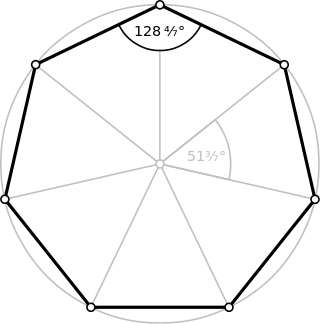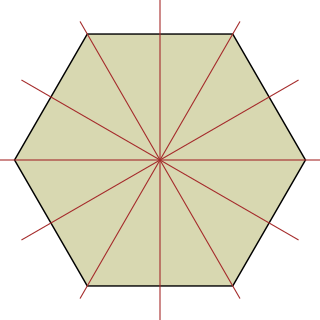Related Research Articles

In mathematics, a field is a set on which addition, subtraction, multiplication, and division are defined and behave as the corresponding operations on rational and real numbers do. A field is thus a fundamental algebraic structure which is widely used in algebra, number theory, and many other areas of mathematics.

In mathematics, a Lie group is a group that is also a differentiable manifold.
In mathematical logic, model theory is the study of the relationship between formal theories, and their models. The aspects investigated include the number and size of models of a theory, the relationship of different models to each other, and their interaction with the formal language itself. In particular, model theorists also investigate the sets that can be defined in a model of a theory, and the relationship of such definable sets to each other. As a separate discipline, model theory goes back to Alfred Tarski, who first used the term "Theory of Models" in publication in 1954. Since the 1970s, the subject has been shaped decisively by Saharon Shelah's stability theory.

In mathematics, genus has a few different, but closely related, meanings. Intuitively, the genus is the number of "holes" of a surface. A sphere has genus 0, while a torus has genus 1.
In mathematical logic, the compactness theorem states that a set of first-order sentences has a model if and only if every finite subset of it has a model. This theorem is an important tool in model theory, as it provides a useful method for constructing models of any set of sentences that is finitely consistent.

In topology, the Jordan curve theorem asserts that every Jordan curve divides the plane into an "interior" region bounded by the curve and an "exterior" region containing all of the nearby and far away exterior points. Every continuous path connecting a point of one region to a point of the other intersects with the curve somewhere. While the theorem seems intuitively obvious, it takes some ingenuity to prove it by elementary means. "Although the JCT is one of the best known topological theorems, there are many, even among professional mathematicians, who have never read a proof of it.". More transparent proofs rely on the mathematical machinery of algebraic topology, and these lead to generalizations to higher-dimensional spaces.
In mathematics, a symplectomorphism or symplectic map is an isomorphism in the category of symplectic manifolds. In classical mechanics, a symplectomorphism represents a transformation of phase space that is volume-preserving and preserves the symplectic structure of phase space, and is called a canonical transformation.
In mathematics, the Jacobian varietyJ(C) of a non-singular algebraic curve C of genus g is the moduli space of degree 0 line bundles. It is the connected component of the identity in the Picard group of C, hence an abelian variety.
In mathematics, algebraic geometry and analytic geometry are two closely related subjects. While algebraic geometry studies algebraic varieties, analytic geometry deals with complex manifolds and the more general analytic spaces defined locally by the vanishing of analytic functions of several complex variables. The deep relation between these subjects has numerous applications in which algebraic techniques are applied to analytic spaces and analytic techniques to algebraic varieties.
In mathematics, a one-parameter group or one-parameter subgroup usually means a continuous group homomorphism
In mathematics, Hurwitz's automorphisms theorem bounds the order of the group of automorphisms, via orientation-preserving conformal mappings, of a compact Riemann surface of genus g > 1, stating that the number of such automorphisms cannot exceed 84(g − 1). A group for which the maximum is achieved is called a Hurwitz group, and the corresponding Riemann surface a Hurwitz surface. Because compact Riemann surfaces are synonymous with non-singular complex projective algebraic curves, a Hurwitz surface can also be called a Hurwitz curve. The theorem is named after Adolf Hurwitz, who proved it in (Hurwitz 1893).
In mathematics, the mathematician Sophus Lie initiated lines of study involving integration of differential equations, transformation groups, and contact of spheres that have come to be called Lie theory. For instance, the latter subject is Lie sphere geometry. This article addresses his approach to transformation groups, which is one of the areas of mathematics, and was worked out by Wilhelm Killing and Élie Cartan.

In mathematics, a differentiable manifold is a type of manifold that is locally similar enough to a vector space to allow one to apply calculus. Any manifold can be described by a collection of charts (atlas). One may then apply ideas from calculus while working within the individual charts, since each chart lies within a vector space to which the usual rules of calculus apply. If the charts are suitably compatible, then computations done in one chart are valid in any other differentiable chart.
In mathematics, the Castelnuovo–de Franchis theorem is a classical result on complex algebraic surfaces. Let X be such a surface, projective and non-singular, and let
In mathematics, Belyi's theorem on algebraic curves states that any non-singular algebraic curve C, defined by algebraic number coefficients, represents a compact Riemann surface which is a ramified covering of the Riemann sphere, ramified at three points only.

Wigner's theorem, proved by Eugene Wigner in 1931, is a cornerstone of the mathematical formulation of quantum mechanics. The theorem specifies how physical symmetries such as rotations, translations, and CPT transformations are represented on the Hilbert space of states.
In mathematics, real algebraic geometry is the sub-branch of algebraic geometry studying real algebraic sets, i.e. real-number solutions to algebraic equations with real-number coefficients, and mappings between them.

Representation theory is a branch of mathematics that studies abstract algebraic structures by representing their elements as linear transformations of vector spaces, and studies modules over these abstract algebraic structures. In essence, a representation makes an abstract algebraic object more concrete by describing its elements by matrices and their algebraic operations. The theory of matrices and linear operators is well-understood, so representations of more abstract objects in terms of familiar linear algebra objects helps glean properties and sometimes simplify calculations on more abstract theories.

In mathematics, more specifically algebra, abstract algebra or modern algebra is the study of algebraic structures. Algebraic structures include groups, rings, fields, modules, vector spaces, lattices, and algebras over a field. The term abstract algebra was coined in the early 20th century to distinguish it from older parts of algebra, and more specifically from elementary algebra, the use of variables to represent numbers in computation and reasoning. The abstract perspective on algebra has become so fundamental to advanced mathematics that it is simply called "algebra", while the term "abstract algebra" is seldom used except in pedagogy.
In real analysis and approximation theory, the Kolmogorov–Arnold representation theorem states that every multivariate continuous function can be represented as a superposition of the two-argument addition of continuous functions of one variable. It solved a more constrained form of Hilbert's thirteenth problem, so the original Hilbert's thirteenth problem is a corollary.
References
- Coolidge, J. L. (1959). A Treatise on Algebraic Plane Curves. New York: Dover. p. 135. ISBN 0-486-60543-4.
- Weber, H. (1873). "Zur Theorie der Transformation algebraischer Functionen" (PDF). Journal für die reine und angewandte Mathematik (in German). 76: 345–348. doi:10.1515/crll.1873.76.345.